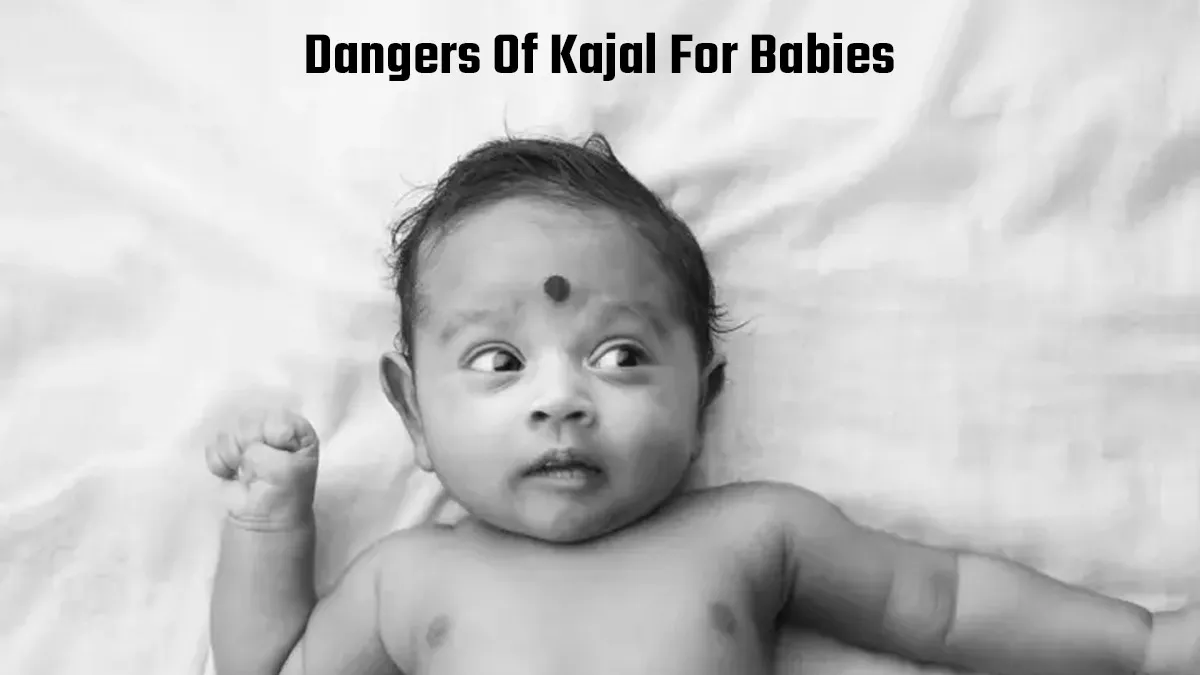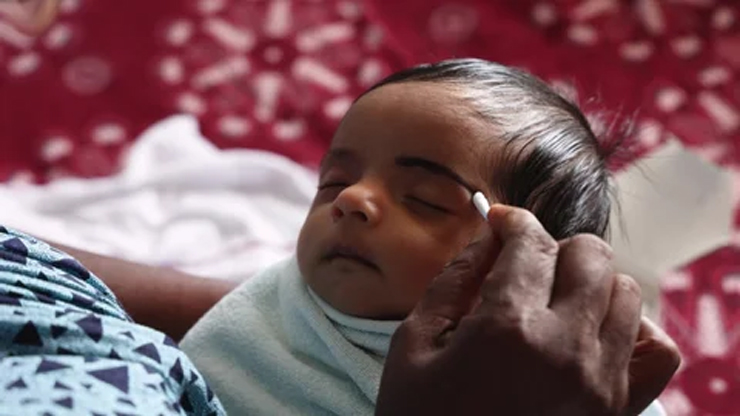
In many cultures, applying kajal (kohl or surma) to a baby’s eyes is a cherished tradition, believed to ward off the "evil eye" and enhance beauty. But modern science raises concerns: could this age-old practice harm your child’s delicate eyes? Pediatricians warn that kajal often contains harmful ingredients like lead, which can poison a baby’s developing body. Worse, sharing kajal sticks between children risks spreading infections. While the ritual holds cultural significance, its safety is under scrutiny. Let’s explore why kajal might do more harm than good and how to protect your baby’s health.
Table of Content:-
Myth vs. Reality: What Kajal Doesn't Do for Babies
View this post on Instagram
Dr. Rahil Chaudhary, Managing Director (M.D) Ophthalmologist, Eye7 Eye Hospitals, Delhi, clarifies common misconceptions: “If you’re applying kajal thinking it improves eyesight, sharpens vision, or prevents infections—these are all myths.” Many parents believe kajal has medicinal benefits, but there’s no scientific evidence to support these claims.
Debunking Common Beliefs:
- Myth: Kajal makes eyes 'bigger' or brighter.
- Myth: It protects against eye infections.
- Myth: Natural kajal is always safe.
“The only cultural purpose is to ‘protect from the evil eye’ by applying a black spot,” says Dr. Chaudhary.
ALSO READ: Is Your Eye Twitching a Sign of Something Serious? Neurological and Lifestyle Causes Explained
The Lead Poisoning Risk: A Silent Threat
-1742474983929.jpg)
Many commercial kajal products contain lead—a toxic heavy metal linked to severe health issues in children. A study in the Journal of Clinical and Diagnostic Research tested 20 kajal brands and found 70% contained lead, some at levels exceeding safety limits.
Dr. Chaudhary explains the danger: “Lead is poisonous. If absorbed into a child’s body, it can cause mental and physical delays, seizures, or even coma.” Babies are especially vulnerable because their skin and eyes absorb chemicals faster than adults.
Symptoms of Lead Poisoning:
- Poor appetite, fatigue, or irritability.
- Developmental delays (e.g., slow speech or walking).
- Learning difficulties later in life.
- Infection Alert: Sharing Kajal Spreads Germs
Even if kajal is lead-free, sharing sticks between children poses risks. “These sticks are often used on multiple kids,” warns Dr Chaudhary. “If one child has an eye infection, it can spread to others.”
Common infections linked to contaminated kajal include:
- Conjunctivitis (pink eye): Causes redness, swelling, and discharge.
- Styes: Painful lumps on the eyelids.
- Corneal scratches: Rough applicators can damage the eye’s surface.
Safer Alternatives to Protect Your Baby

If you still wish to follow the tradition, take these precautions:
- Avoid Commercial Kajal: Opt for homemade versions only if ingredients are safe (e.g., almond oil or ghee). Consult a doctor first.
- Use Disposable Applicators: Never share sticks between children.
- Apply Sparingly: Avoid the inner eyelids or waterline.
- Check Labels: Look for lead-free, FDA-approved products.
The expert advises: “Instead of kajal, focus on hygiene. Wash your baby’s face with clean water and monitor for eye redness or irritation.”
ALSO READ: Does Shaving a Baby’s Hair Improve Growth? The Truth Behind the Myth
When to See a Doctor
Seek immediate medical help if your baby shows:
- Persistent eye redness, swelling, or discharge.
- Rubbing eyes excessively.
- Unusual fussiness or signs of discomfort.
Conclusion
While kajal has deep cultural roots and is often used with good intentions, its potential risks to a baby’s health cannot be ignored. From lead poisoning to eye infections, the dangers far outweigh any perceived benefits. Instead of relying on kajal, focus on maintaining good hygiene and keeping your baby’s eyes clean and healthy. If you wish to follow traditional practices, opt for safer alternatives and always prioritise your child’s well-being. Remember, your baby’s bright, sparkling eyes don’t need kajal to shine—they’re perfect just the way they are!
Also watch this video
How we keep this article up to date:
We work with experts and keep a close eye on the latest in health and wellness. Whenever there is a new research or helpful information, we update our articles with accurate and useful advice.
Current Version